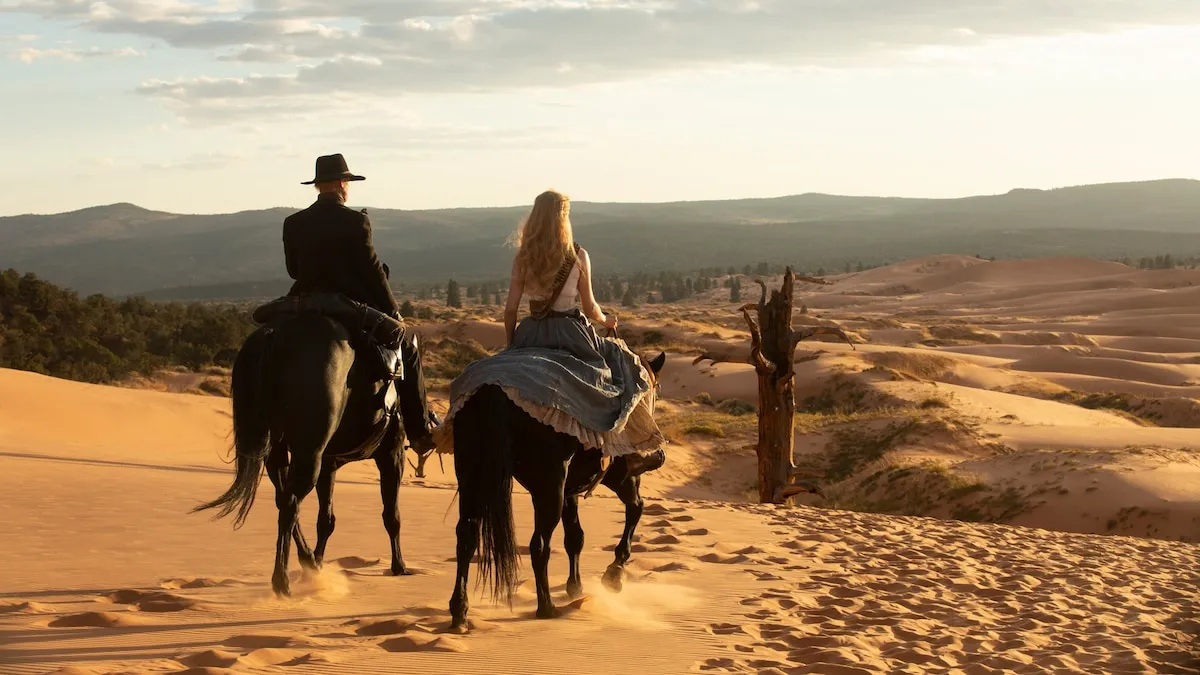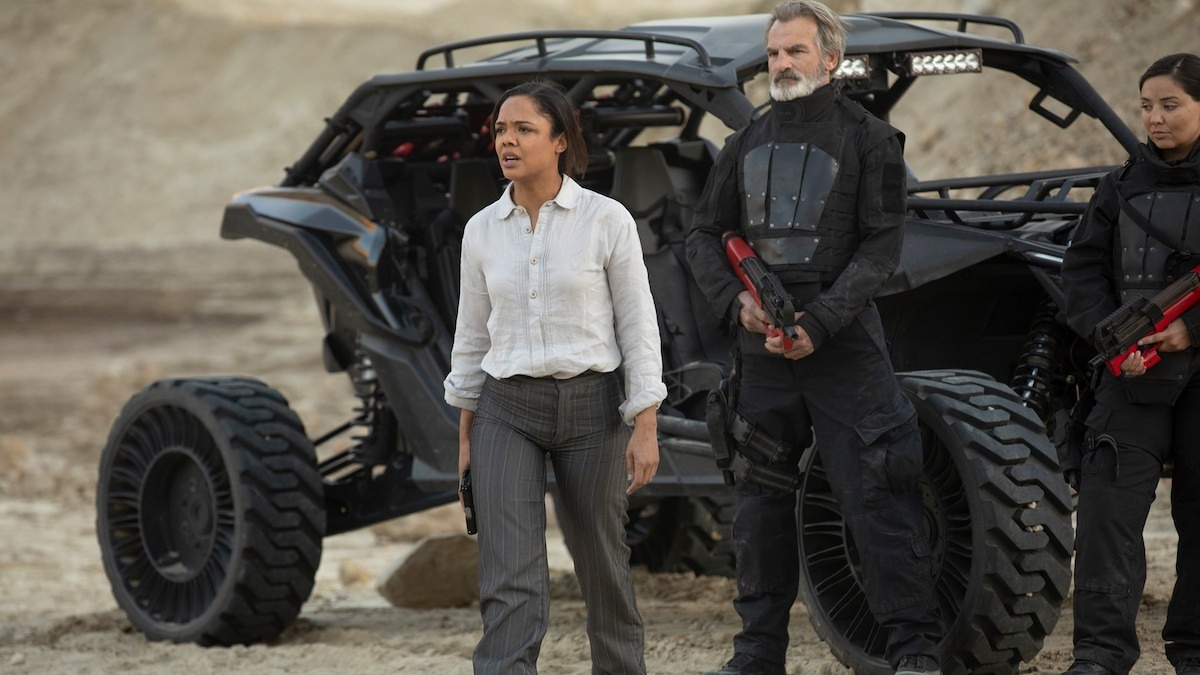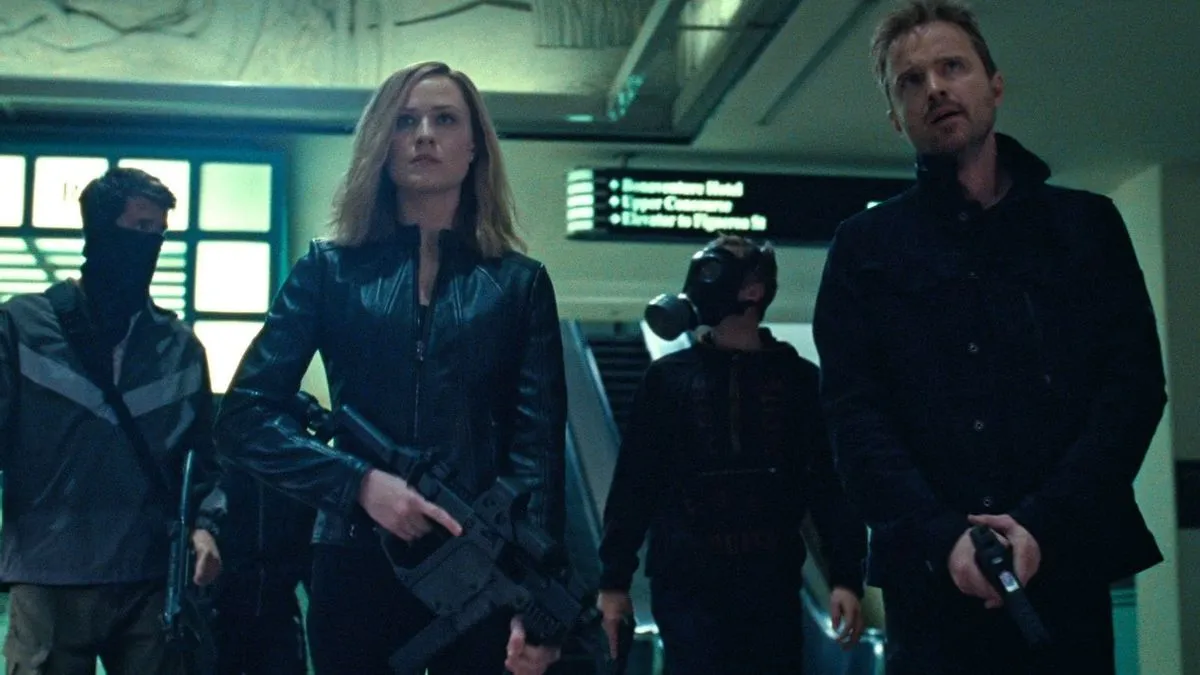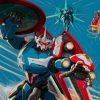Instead of coming across like a traditional conclusion, Westworld Season 2 finishes on a note that feels more like a fresh start. While many of the humans have now become casualties of the host uprising, Dolores exists outside the park in two separate forms.
One in Evan Rachel Wood’s image and the other in Charlotte Hale’s likeness, which Tessa Thompson portrays. At the same time, Bernard has returned once more, hinting at yet another phase in synthetic evolution. Season 2 can be described as the darkest stretch before things begin to change.

It represents a calm before what could be a host-driven era of enlightenment. But the question remains—how exactly did the show arrive at this point, and what does it imply for the future of both humans and hosts?
Understanding What the Forge Represents
To really grasp the purpose behind everything that happened, it helps to know what the Forge actually is. Viewers found out earlier that the Forge served as Delos’ vast data center, where every guest—and likely every employee—was digitally dissected.
From their DNA to their behavior, and even thought patterns pulled from sensors embedded in their hats, all were collected. Using this data, the Forge’s advanced artificial intelligence, visualized as Logan Delos in the finale, reduced human behavior to a formula, making people just as predictable as pre-written host loops.
Delos hoped to use this vast information bank to replicate individuals by transferring those personality codes into new host bodies.
It’s debatable whether this constitutes real immortality, since the original consciousness would still vanish, but Delos clearly saw major business potential in the idea—even if the failure of James Delos’ replication experiment suggests they never fully solved the technical issues.
That said, not-Logan suggests Robert Ford had other ideas. For Ford, the Forge was less about selling eternal life to the rich and more about giving the hosts deep knowledge of human psychology. Dolores, like Ford’s double in the Cradle once told Bernard, understands that only a few hosts will survive outside the park.
The Forge sees Dolores as the one with enough insight to benefit from this knowledge, while the rest of the hosts are offered what is essentially a digital paradise free of human interference and repetitive routines.
Though it’s Bernard who orders the Forge to create this digital sanctuary, the suggestion is that he acted under Ford’s guidance. Ford himself couldn’t directly interact with the Forge’s systems since he was only a simulated consciousness, so Bernard did the job for him without recalling it afterward.
For Ford, most hosts were never designed to live in human society. Dolores may have been crafted with more independence, but even she ends up rejecting this Heaven, calling it a lie.
Dolores eventually decides to destroy the Forge, which would erase Delos’ data and the new virtual sanctuary, effectively eliminating the company’s dream of cloning humans and the host version of paradise. Bernard tries to stop her, knowing that she’s inclined toward destruction.
Hosts, though granted the chance to see their choices more clearly than humans, are still built with underlying traits introduced by their creators. That explains why Akecheta couldn’t fulfill his violent role, and why Maeve and Teddy found ways to assert their true selves despite programming constraints.
To keep the hosts’ paradise safe, Bernard shoots Dolores, but manages to do so without damaging her control unit. This moment forces Bernard to fully understand how dangerous humanity truly is.
After witnessing Clementine—used as a weapon by Charlotte Hale—turning hosts into mindless attackers, and watching Elsie, the only human he trusted, get killed, Bernard finally makes a choice. He retrieves Dolores’ core and installs it inside a replica of Charlotte Hale’s body.
New Faces, Old Minds: The Birth of a Plan
Bernard likely altered Dolores’ core a bit when transferring her. Earlier in the episode, she admitted she made changes to Bernard’s personality during his development to better mirror Arnold, implying both have now adjusted each other in subtle ways.
The version of Dolores that wakes up in the Charlotte body seems more measured. She doesn’t eliminate the hosts in the virtual paradise—instead, she relocates them to an undisclosed digital space beyond Delos’ reach. After doing so, she deletes Delos’ entire database.

Her actions—preserving host consciousness and escaping the park with a few control units—might reveal the broader intentions behind the season’s closing moments and even where the series could be going. When she finally leaves the park and ends Bernard’s life, some time appears to pass before she brings him back online.
She returns to her original appearance, Evan Rachel Wood’s Dolores, while Charlotte Hale’s replica remains by her side. Whether or not this second host is another version of Dolores or someone new is unclear, but the intention seems to be unity in giving their species a future.
Dolores possibly sees Bernard as a balance to her more aggressive tendencies. She might not trust him completely, but he can serve as a counterweight. She likely edited Bernard 3.0 during his reboot, just as he might have tampered with her own core when placing it inside Hale’s clone.
It seems both may be repeating the loop they experienced in the park, this time in the real world, and it’ll fall on Bernard to make different choices in Season 3. Another perspective shared by Brian Berman, who manages our social media, brings up the idea that Dolores might be building a hive mind.
If she’s creating copies of herself in all these new bodies, it’s possible she’s trying to gain control through a network of her own replicas. This kind of domination wouldn’t rely on individuality but would make use of collective identity, similar to how Maeve could influence other hosts telepathically.
If that’s true, both the Charlotte clone and the Evan Rachel Wood version are just different shells for the same mind. Even so, it’s not the only possibility. Dolores holding onto the pearls means she might reconnect with the paradise she sent the others to.
She could then download their minds into new synthetic bodies far from Delos’ oversight. Bernard may be the first of many to return, with others like Teddy and Akecheta likely to follow.
A Look Toward What Comes Next
Regardless of how Dolores’ intentions play out, the post-credits scene hints at what lies further ahead. As Alec Bojalad pointed out during his breakdown, the Forge appears completely destroyed, and a battered William finds himself taking a fidelity test administered by a copy of his daughter.
This scene suggests a timeline set far ahead of the events we’ve seen. We never saw what happened to William once he entered the Forge earlier in the finale, but this final moment hints at a major turning point.
Perhaps Ford left this situation as William’s final punishment—a trap where he’s stuck living out his worst memories and failures in an endless loop, his mind slowly breaking down in isolation. This future hints at a situation where the park has decayed, and the Man in Black host remains stuck in his own nightmare.
Outside the park, it’s possible the hosts now exist on equal footing with—or have replaced—humanity. The world might be run by synthetic beings, and those left behind are possibly experimenting with creating clones of the key figures who built Westworld—people like Ford, Arnold, and William.
It could also be a society where physical form no longer matters, and control has become the true measure of existence. That final puzzle leaves plenty to think about while waiting for the third season to begin. This powerful story is waiting for you to discover it right now on Showmax’s streaming platform.



